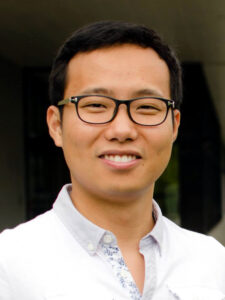Aircraft tell air traffic controllers and observers on the ground information about their position, speed, etc, thus allowing them to be tracked. Automatic Dependent Surveillance-Broadcast (ADS-B) and Mode S are two types of radar systems that allow air traffic control to receive this information and monitor aircraft’s movements and positions. Hence, ADS-B and Mode S signals are incredibly valuable sources of information for those studying air traffic management and aircraft performance modelling. In his new book “The 1090 Megahertz Riddle: A Guide to Decoding Mode S and ADS-B Signals”, Junzi Sun, Assistant Professor at the Department of Control and Simulation, Faculty of Aerospace Engineering, offers a practical guide for researchers and engineers to unlock these open aircraft surveillance data.

“For my PhD research, I needed to decode ADS-B information to obtain the data I needed,” Junzi recalled, “We have an antenna set up at the faculty to receive and record the ADS-B signals, but to decode and convert it into data regarding flight positions, speeds and other parameters, I needed to understand the types and structures of messages and come up with innovative ways to convert them.” For this, Junzi started studying the complicated and dense technical documentation detailing how these signals can be processed and writing Python tools to decipher the messages one by one. He began sharing these Python scripts online, using GitHub, a platform that allows the easy sharing and collaborative development of code. “Soon I started getting messages from other people: people who had read my work and shared their questions and ideas with me. Sometimes they would ask me to decode something; I would look in my notes and figure out how to do it, then share the output and my comments on the decoding process with them and publicly, online.” Soon, these back-and-forth conversations built up into a bank of shared knowledge on ADS-B and Mode-S signal decoding. “This is when I thought – why don’t I publish a book about this?”
Yet, writing a book was no easy feat. “Despite having already created essentially an online version of the book, I was doing more research and decided to update a lot of the background information. What I thought was a few months of work eventually turned into almost two years of labour on weekends and evening.” To complete the book, Junzi learned to assimilate massive amounts of information from multiple sources quickly, adding his own experience and distilling all this useful information into an insightful and easy-to-understand narrative. For example, in addition to providing practical guidance on decoding the signals, the book also shares how to set up hardware and software to receive Mode S signals.
For many in Junzi’s field of research, being able to decode these signals is the first step in undertaking their research, and the techniques described in the book can open more possibilities for analysing and modelling air traffic. “I recently became one of the principal investigators of a new lab in the Faculty of Aerospace Engineering that investigates the sustainability of air traffic. Our work will also rely on data obtained from decoding these signals.” Not only are other researchers and engineers benefitting from this knowledge, but also radio hobbyists and even live air traffic tracking websites like Flightradar24 and OpenSky Network. “I think this book is also useful for those who would like to build hardware to decode ADS-B and mode S signals, as well as students interested in this field.”

Through diligently sharing his work online, Junzi was able to receive continuous feedback and learn from others in the community, and this book was no exception. “I have already received messages from readers who spotted typos in the book, so I hope to correct them in an updated version.” He plans to release newer online versions as the feedback and corrections come in. “I enjoyed writing a book on a topic that I am truly passionate about and have been working on for years. I’m happy to be able to share a full story, a rich narrative based on my understanding and experience. But the fact is that knowledge is ever-evolving; what is in this book is experience and ideas that have been accumulating over the years, collectively built by the community.”
For me, to publish open access, to ensure that everyone in the world can read and use this work, especially those who don’t have the same resources as we do to buy the book or pay for hefty subscription fees, is the natural choice.
This commitment to open science and community involvement also underpins Junzi’s motivation to make his book openly accessible. “I’ve used a lot of open-source tools in my research. I’ve benefitted from sharing my work publicly with a wider community, and I don’t rely on profits from the book for a living. For me, to publish open access, to ensure that everyone in the world can read and use this work, especially those who don’t have the same resources as we do to buy the book or pay for hefty subscription fees, is the natural choice.” He published his book under a Creative Commons Attribution-NonCommercial license, which allows anyone to adapt and build upon his work for non-commercial purposes. “My philosophy is that sharing is a two-way street. Sharing can only have a larger impact if those who use and improve others’ work contribute back through sharing their work, and I’m glad I can propagate this philosophy through applying such a license, like CC BY and the GPL licenses for my open-source software tools.”

“The 1090 Megahertz Riddle: A Guide to Decoding Mode S and ADS-B Signals” is now available on TU Delft OPEN. You too can publish an open access book – visit TU Delft OPEN’s website to find out more or contact the TU Delft OPEN Publishing team. To find out more about Creative Common Licenses and how to use and apply them, please consult the TU Delft Copyright Helpdesk.
